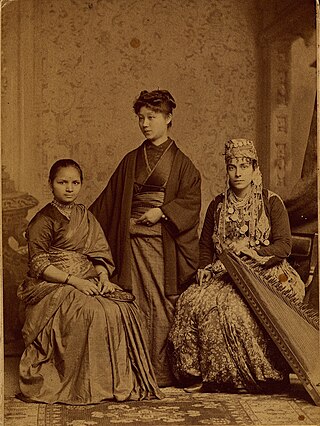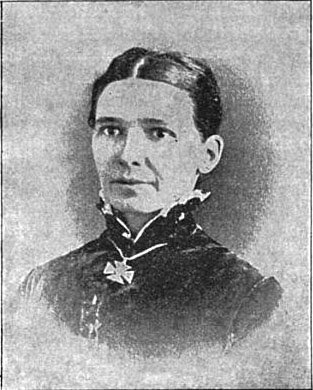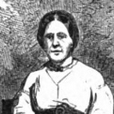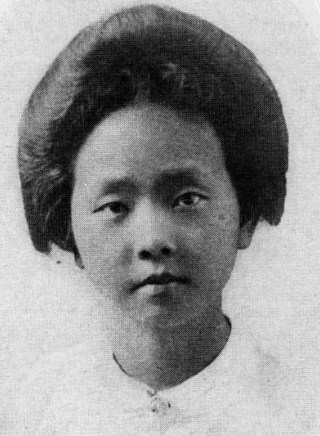Related Research Articles
Presbyterian Mission Agency is the ministry and mission agency of the Presbyterian Church (U.S.A.). Founded as the Western Foreign Missionary Society by the Presbyterian Church in the United States of America in 1837, it was involved in sending workers to countries such as China during the late Qing dynasty and to India in nineteenth century. Also known as the Foreign Missions Board in China, its name was changed by the Old School body during the Old School–New School Controversy to the Presbyterian Board of Foreign Missions.
Medical missions in China by Protestant and Catholic physicians and surgeons of the 19th and early 20th centuries laid many foundations for modern medicine in China. Western medical missionaries established the first modern clinics and hospitals, provided the first training for nurses, and opened the first medical schools in China. Work was also done in opposition to the abuse of opium. Medical treatment and care came to many Chinese who were addicted, and eventually public and official opinion was influenced in favor of bringing an end to the destructive trade. By 1901, China was the most popular destination for medical missionaries. The 150 foreign physicians operated 128 hospitals and 245 dispensaries, treating 1.7 million patients. In 1894, male medical missionaries comprised 14 percent of all missionaries; women doctors were four percent. Modern medical education in China started in the early 20th century at hospitals run by international missionaries.

The Woman's Medical College of Pennsylvania (WMCP) was founded in 1850, and was the second medical institution in the world established to train women in medicine to earn the M.D. degree. The New England Female Medical College had been established two years earlier in 1848. Originally called the Female Medical College of Pennsylvania, the college changed its name in 1867 to Woman's Medical College of Pennsylvania. The associated Woman's Hospital of Philadelphia was founded in 1861. Upon deciding to admit men in 1970, the college was renamed as the Medical College of Pennsylvania (MCP).
Mary Hannah Fulton was a medical missionary sent to South China by the Presbyterian Church. She began her work by setting up a dispensary in Kwai Ping, then continued by working with the Canton Hospital. Dr. Fulton set up a college to train women in medicine, the Hackett Medical College for Women, and served as the dean there. In addition, she preached the Presbyterian faith and ultimately began a multi-denominational Christian congregation in Shanghai. There she also translated English medical volumes into Chinese. She died in Pasadena, California at the age of 72.

Ida Kahn, born Kang Cheng, was a Chinese medical doctor who, along with Mary Stone, operated dispensaries and hospitals in China from the late nineteenth to the early twentieth century. Kahn was most known for expanding the presence of Chinese women in the workforce. This work, along with that of her sister Mary Stone established the first corps of Chinese women medical professionals.

Mary Stone, also known as Shi Meiyu, was a doctor of medicine graduated from the University of Michigan. She founded Danforth Memorial Hospital in Kiukiang.

Kei Okami was a Japanese physician. She was the first Japanese woman to obtain a degree in Western medicine from a Western university.

Dr. Mary West Niles was born in Watertown, Wisconsin to Rev. William Allen Niles and Mary Elizabeth Niles. Dr Niles played an important role in the Canton Medical Missionary Society as the first woman missionary physician at the Canton Hospital. She was a pioneer physician to open school for the Blind in China, the Mingxin School (1889-1932), and in translating the English Braille system into the Cantonese /Chinese language by learning it herself first.
Woman's Union Missionary Society of America for Heathen Lands was an American Christian mission organization. Established in 1861, its headquarters were at 41 Bible House, Astor Place, New York City. The first meeting called to consider organizing a society was gathered in a private parlor in New York City on January 9, 1861, and addressed by a returned missionary from Burma. At a subsequent meeting on January 10, the organization was effected, with Sarah Platt Doremus as president. The society's object was to "send out and maintain single women as Bible-readers and teachers, and to raise up native female laborers in heathen lands".

The Obstetrics and Gynecology Hospital of Fudan University, commonly known as the Red House Hospital, is a teaching hospital in Shanghai, China, affiliated with the Shanghai Medical College of Fudan University. It is rated Grade 3, Class A, the highest rating in the Chinese medical system.
Mary Elizabeth McCracken was the first woman to overcome infantile paralysis to become a medical missionary. She was the third of eight children and the daughter of the medical missionaries Josiah Calvin McCracken and Helen Newpher McCracken, also known as the "McCrackens of Shanghai". Mary Elizabeth followed her father's footsteps and worked alongside him to perform surgery on citizens affected by the Sino-Japanese conflict in Shanghai. She also headed the pediatrics department of her father's Refugee Hospital for many years.

Sigourney Trask was an American physician and missionary. She is remembered as being the first woman physician at Fuzhou, China sent by the Methodist Episcopal Church missionaries.

Martha Foster Crawford was an American writer and missionary to China (1852–1909). She was the first foreign missionary from Alabama. Her parents were the deacon, John Lovelace Savidge Foster, and Susanna Hollifield Foster. In 1851, shortly before she became a missionary to China, she married Tarleton Perry Crawford, whom she had known for three weeks. They arrived in Shanghai in March 1852. During their marriage, they adopted two children.

Ailie May Spencer Gale (1878–1958) was an American physician. She served as a medical missionary in China under commission from the Methodist Episcopal Board of Missions from 1908 to 1950 alongside her husband Rev. Francis Gale, a religious missionary. Committed to a lifetime of unpaid social activism, Gale's work emphasized an approach to patient care that focused on preventative care and public health, humane treatment, and consideration for the whole patient, entailing concern for physical, spiritual, and intellectual needs. She also had evangelical motives and sought to promote the status of Chinese women.

Lydia Mary Fay was a 19th-century American missionary, educator, writer, and translator. She was the first unmarried woman from North America to be a missionary to China, and one of the band of women that laid broad and deep foundations in the early days of missionary work in the Chinese empire.

Josephine Carrier Lawney was an American physician, college administrator, and Baptist medical missionary in China. She was dean of the Women's Christian Medical College in Shanghai.
Lucinda L. Combs-Stritmatter was an American physician who was the first female medical missionary to provide medical care in China and is credited with establishing the first women's hospital in what was then Peking. Combs was a pioneer in women's medical care while serving the Women's Foreign Ministry Society's North China Mission for seven years.

Phebe Stone was a physician and medical missionary who worked in Kiukiang (Jiujiang), China. She was the younger sister of the notable missionary Mary Stone, also known as Shi Meiyu. Her family was from the Hubei province in China and were one of a handful of Christians in the area. Stone went on to Goucher College in the United States for her undergraduate degree and later was awarded a fellowship to attend Johns Hopkins, where she received medical degree in 1918. Stone was the first Chinese woman to graduate from Johns Hopkins School of Medicine. Afterward, Stone briefly worked as a medical intern at a women's hospital in Worcester, Massachusetts, then returned to her hometown of Jiujiang to take over the Danforth Hospital established by her sister Mary. She later founded the Bethel Mission and its encompassing hospital in 1920 along with Mary and the American missionary Jennie Hughes. She contracted tuberculosis and died in 1930.
Belle Caldwell Culbertson was an American author and philanthropist, active in social and religious reforms. She served as president, Woman's Foreign Missionary Society of the Presbytery of Washington City; president, Woman's Inter-Denominational Missionary Union of the District of Columbia; and president, Washington Auxiliary Mission to Lepers. Other positions included: Trustee, Anti-Saloon League; Trustee, International Reform Bureau; vice-president, Mothers' Congress of D.C.; and member, Executive Board, Woman's Christian Temperance Union (W.C.T.U.).

Jennie M. Bingham was an American author and litterateur.
References
 This article incorporates text from this source, which is in the public domain : A. Foster's Christian Progress in China: Gleanings from the Writings and Speeches of Many Workers (1889)
This article incorporates text from this source, which is in the public domain : A. Foster's Christian Progress in China: Gleanings from the Writings and Speeches of Many Workers (1889) This article incorporates text from this source, which is in the public domain : H. H. Hain's History of Perry County, Pennsylvania: Including Descriptions of Indians and Pioneer Life from the Time of Earliest Settlement, Sketches of Its Noted Men and Women and Many Professional Men (1922)
This article incorporates text from this source, which is in the public domain : H. H. Hain's History of Perry County, Pennsylvania: Including Descriptions of Indians and Pioneer Life from the Time of Earliest Settlement, Sketches of Its Noted Men and Women and Many Professional Men (1922)
- ↑ "Elizabeth Reifsnyder conducting ovariotomy operation". Drexel University. Retrieved 22 May 2016.
- ↑ Shemo 2011, p. 34.
- ↑ Schoch, Agnes Selin (1942). "Dr. Elizabeth Reifsnyder: Pioneer Woman Medical Missionary to China". Pennsylvania History: A Journal of Mid-Atlantic Studies. 9 (2): 151–53. JSTOR 27766511.
- ↑ Foster 1889, p. 191.
- ↑ Wang 2003, p. 76.
- 1 2 Hain 1922, p. 716.
- ↑ American Presbyterian Mission 1922, p. 345.
- ↑ American Medical Association 1922, p. 598.